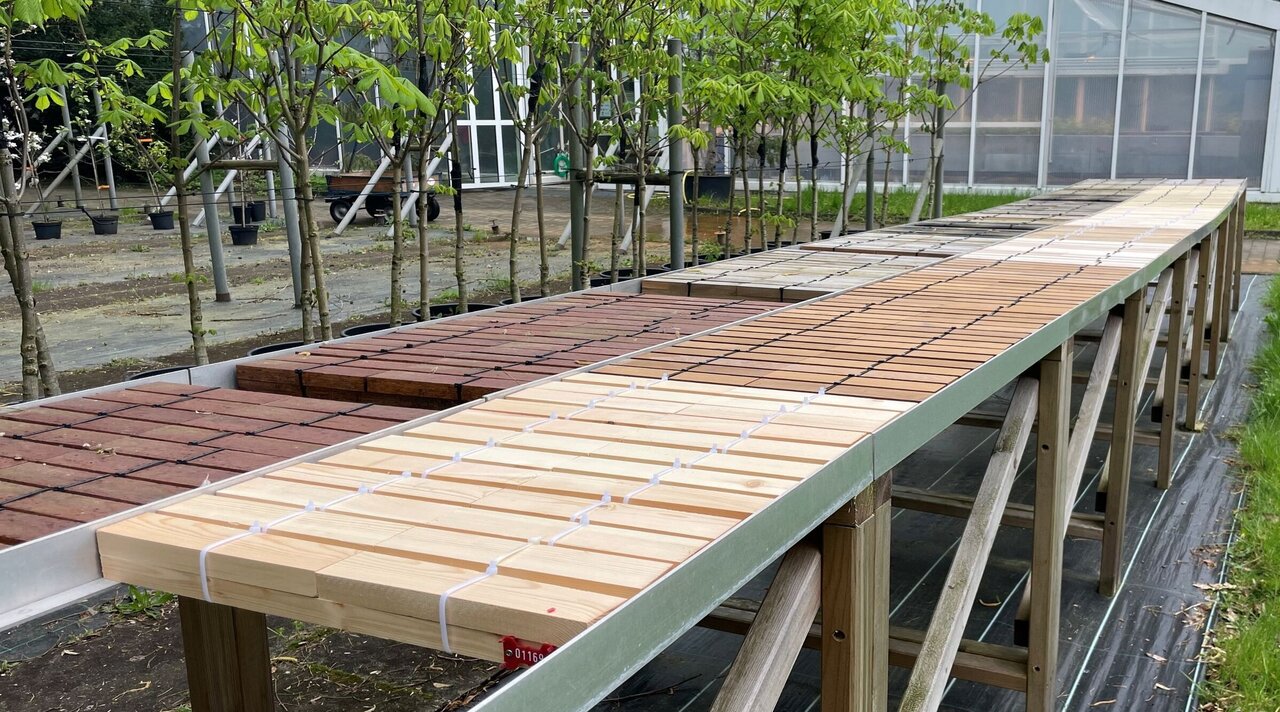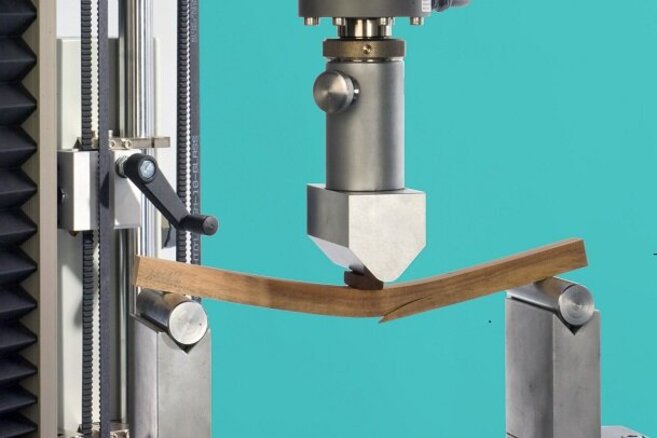Project
Round Robin Test - Bundle method

Round Robin Test - Bundle method for determining the biological durability of wood
As part of a European research collaboration, the suitability of a new field testmethod for determining the biological durability of wood above-ground is being investigated.
Background and Objective
The biological durability of wood and wood-based materials is tested in laboratory or field tests. The latter require significantly more time, usually several years, are influenced by location-dependent parameters, but provide more realistic results than laboratory tests. Field methods for determining the durability of wood against wood-destroying fungi take place either with or without soil contact. In soil burial tests, so-called 'graveyard tests', the test wood is almost constantly exposed to moisture conditions that allow fungal growth and wood degradation. In addition to brown and white rot fungi, soft rot fungi and bacteria also occur in the soil. Outside the ground, however, wood is only temporarily moistened, so the conditions for degradation differ and the durability of wood as a material property is often different. Although significantly more wood is used outdoors without soil-contact than in contact with the ground, European standards (here CEN/TC 38) do not provide for a test method for determining biological durability above- ground. Only the effectiveness of wood preservatives can be determined, for example in lap-joint or L-joint tests. In order to close this gap in European standardization, a draft standard was prepared for the bundle method, which has been used by several research teams in Europe for over 15 years. As part of a round robin test, the project aims to generate data and gain further experience with this test method in order to establish the method and include it in the portfolio of CEN standards for determining the biological durability of wood.
Target Group
European and national standardisation bodies, research institution and test laboratories
Approach
Bundle test specimens made from different wood species as well as thermally and chemically modified wood are simultaneously exposed in the open field by a total of seven research institutions and regularly assessed for the occurrence of rot. The test specimens are manufactured centrally by the Thünen Institute for Wood Research and NIBIO (Norwegian Institute of Bioeconomy Reserach) in Ås, Norway. The three reference wood species exposed are Scots pine sapwood (Pinus sylvestris), Norway spruce (Picea abies) and European beech (Fagus sylvatica). The tested timbers are black locust (Robinia pseudoacacia), Scots pine heartwood, thermally modified silver fir (Abies alba) and pine modified with citric acid and sorbitol. The tests take place at the three German locations in Olsberg, Eberswalde and Hamburg, in Montpellier in France, in Ås in Norway, in Ljubljana in Slovenia and on the Malaysian island of Borneo under tropical conditions.
Our Research Questions
Can test results that allow durability classification be achieved in a sufficiently short time using the bundle test method?
How much do the durability ratings achieved in climatically different locations differ?
Do the instructions and descriptions contained in this draft standard allow the tests to be carried out in a as similar manner as possible by different persons?
Are adjustments to the current draft standard or the method described therein required in order to achieve reproducible results?
Thünen-Contact

Involved external Thünen-Partners
- Norsk institutt for bioøkonomi (NIBIO)
(Ås, Norwegen) - CIRAD (Centre de Recherche Agronomique pour le Développement, Agricultural Research Centre for International Development)
(Montpellier, Frankreich) - University of Ljubljana
(Ljubljana, Slowenien) - MPA Eberswalde - Materialprüfanstalt Brandenburg GmbH
(Eberswalde, Deutschland) - Wald und Holz NRW - Zentrum für Wald und Holzwirtschaft (FB V) Team Holzwirtschaft
(Olsberg, Deutschland) - Teknologisk Institut (Danish Technological Institute, DTI)
(Taastrup, Dänemark)
Duration
1.2024 - 12.2034
More Information
Project status:
ongoing








